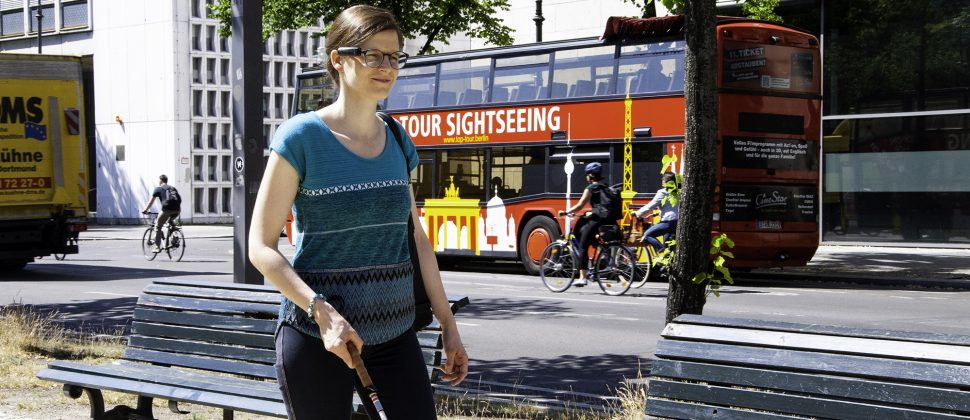Assistive Technologies for the Blind Enter A New Age
2023-05-11 | By Orcam Staff

The world has adapted rapidly to using technology products and software programs for daily life. In almost every developed country, people use their smartphones, tablets, and computers constantly. Performing dozens and sometimes even hundreds of actions on our technology devices every day. On the other hand, the assistive technologies category has taken its time to catch up. This category services the purpose of providing useful technical tools for people with special needs such as blind, deaf, and others to be able to live a more independent life.
Life With Special Needs

There are many people who are currently living with a variety of disabilities and other challenging physical conditions. This means being constantly challenged with what they can independently perform and what they are having difficulties with. This is true in their personal life at home, and for performing errands and shopping for products in stores. When it comes to participating in school, special education needs require having separate classes and schools to be able to accommodate their needs.
Therefore, schools for students who are blind, deaf, and disabled are found in almost every region and city in almost every country. In many cases, assistive technologies are being used by the schools in order to teach these students in the best way possible. Whether its hearing aids for deaf students, screen readers for blind students, and even special desks for students in wheelchairs.
Working With Disabilities

The modern workplace has become a disability-friendly environment where people who are deaf, blind, or in a wheelchair can find work rather easily. While people who use wheelchairs for mobility, can use computers and machines on their own, people who are blind or deaf often have difficulties with using them independently. For this reason, people who are blind or visually impaired use assistive technologies products in the workplace and in their private life. The main focus of the features in these technologies and tools is to convey visual information in audio to the people using them.
Assistive Technologies for the Blind and Visually Impaired

While there are many assistive devices being used by people who are blind or visually impaired, the most advanced and revolutionary ones are technology-based. The device that stands out above all of the others, is the OrCam MyEye. It is a miniature, portable, lightweight, and wearable device about the size of a finger. It can either be held in the user’s hand or even attached magnetically to any pair of glasses.
This allows users to use both of their hands for anything else while there wear the device. In addition, it does not require an internet connection so users can use it anywhere they are at all times. The device conveys by audio, visual information that it can detect through its miniature camera. Users can also use Bluetooth connected earphones for privacy and discretion.
With the OrCam MyEye, you can instantly interactively read text form any printed or digital surface. Recognize faces, money bills, colors, barcodes of products, and even personal items.



